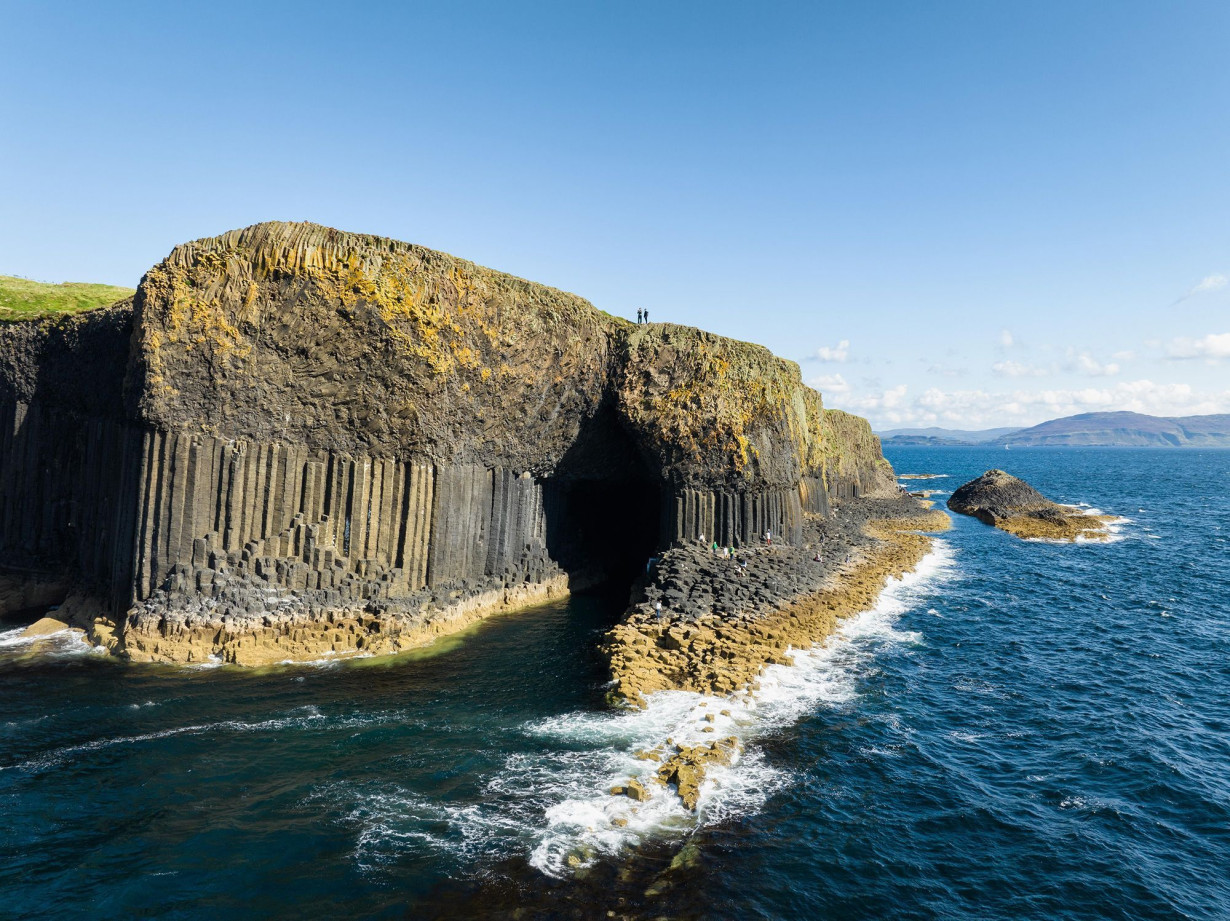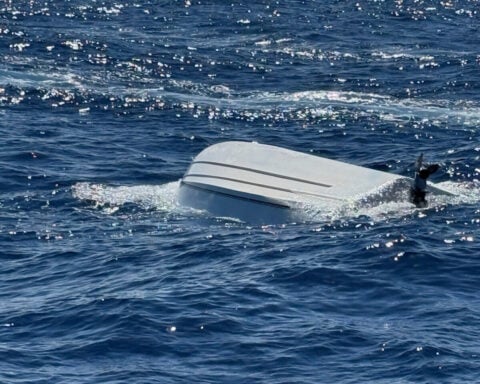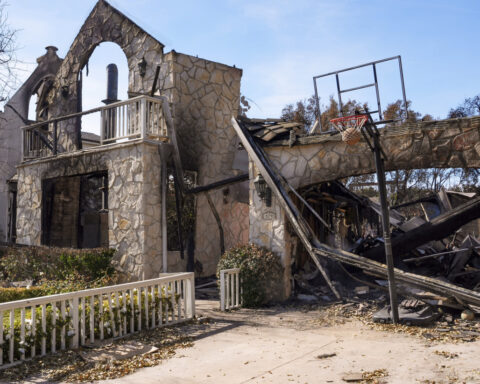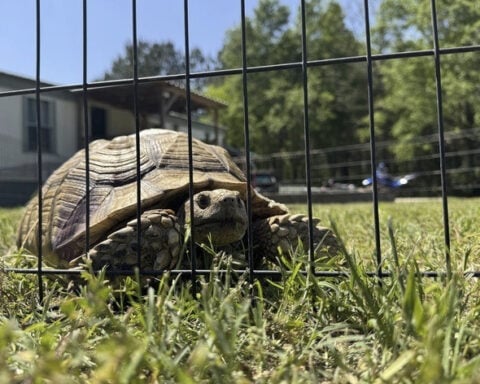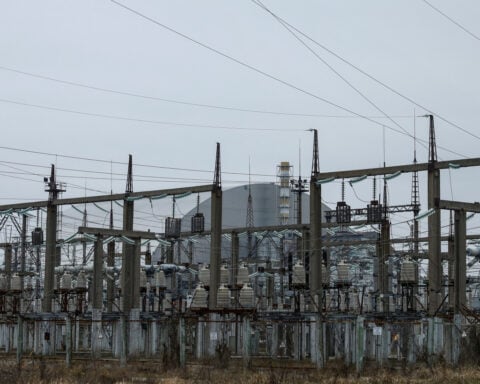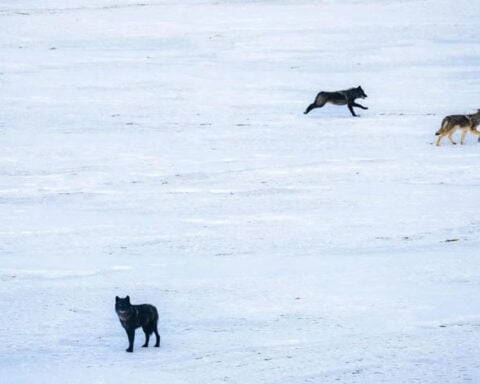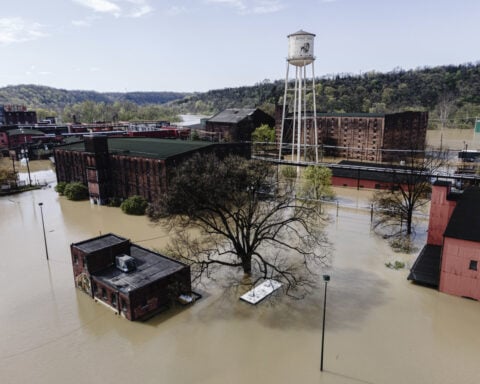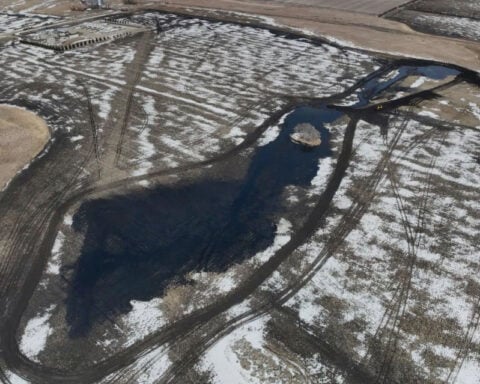(CNN) — More than half a billion years ago on a frigid, ice-covered Earth, glaciers stirred up ingredients for complex life by bulldozing land minerals and then depositing them in the ocean, according to a new study.
Inch by inch, as massive glaciers crept over frozen land toward an ice-covered sea, they scoured the ground beneath them, gouging and scraping rocks from Earth’s crust. When the glaciers eventually melted, they released a torrent of terrestrial chemicals into the ocean, researchers recently reported. Minerals swept up on land by this “glacial broom” altered marine chemistry and infused oceans with nutrients that they say may have shaped how complex life evolved.
This ancient period of deep freeze, known as the Neoproterozoic Era, or “Snowball Earth,” lasted from about 1 billion to 543 million years ago. During that time, landmasses consolidated into a supercontinent called Rodinia and then broke apart again. Earth’s earliest forms of life, such as microbes, cyanobacteria, sponges and seafloor-dwelling organisms, populated the oceans. After the end of the Neoproterozoic came the rise of more complex life, with the first appearance of marine creatures sporting armor, shells and spikes.
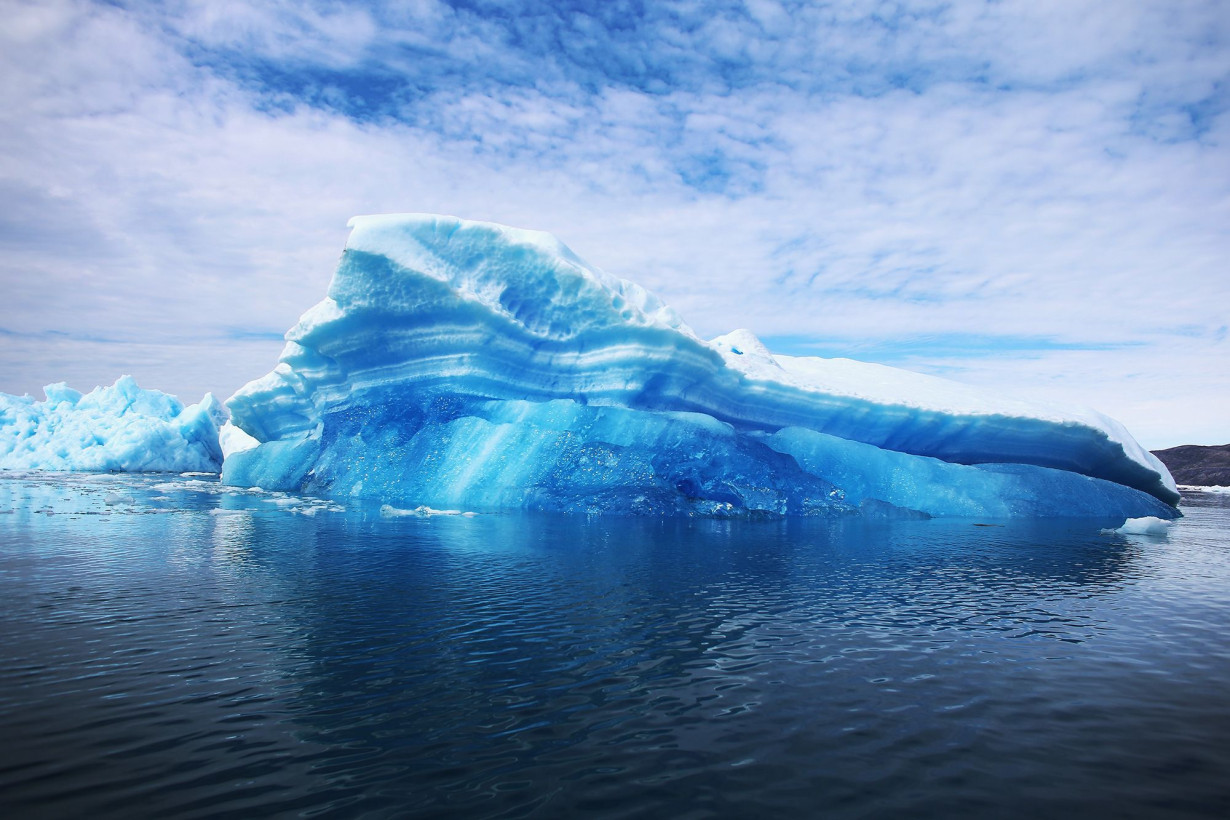
Scientists have attributed this evolutionary boom to increased oxygen levels in Earth’s atmosphere and in shallow ocean waters. And now, research published Tuesday in the journal Geology suggests the flowing of ancient glaciers may have directly shaped chemical changes in the ocean that were critical for the evolution of complex organisms.
Studying Snowball Earth offers a window into our planet’s past, but it also presents valuable insights into modern climate change, lead study author Dr. Chris Kirkland said.
“Our deep time geological record indicates how changing one part of Earth affects another,” he said. Right now, the dramatic warming of the planet that marks the human-fueled climate crisis is happening at breakneck speed compared with these ancient processes that took millions of years.
“This rapid pace limits Earth’s ability to naturally regulate itself, underscoring the urgency of addressing anthropogenic climate change.”
From snowball Earth to hothouse planet
Glacier movement, or glaciation, is known to scrape up and ferry terrestrial sediments into oceans, lakes and rivers, forming the basis of aquatic food webs. However, researchers who study ancient Earth were previously uncertain whether Neoproterozoic glaciers moved at all, let alone enough to erode the ground beneath them and transfer minerals into the sea.
“It had been hypothesized that widespread glacial erosion of continental interiors could be caused by the Snowball Earth ice,” said Kirkland, a professor in the School of Earth and Planetary Sciences at Curtin University in Perth, Australia. “However, aspects of this idea were not clear because that ice may not have moved or moved only slightly or indeed even flowed.”
Kirkland and his colleagues found answers in Scotland and Northern Ireland, where they studied sediments from rock formations dating to the Neoproterozoic. The team looked at zircons — crystallized minerals that are exceptionally durable and can weather extreme geological events. Zircons also contain uranium; by measuring the stages of uranium’s decay in zircons, geologists use the minerals as chronometers for studying Earth’s past.
The researchers examined sediments dating to the time when Earth was covered with ice, and from the “hothouse Earth” period millions of years later when the ice was gone, and found the mineral composition of Snowball Earth sediments differed dramatically from that of later sediments.
“We recovered distinctive patterns in the populations of these mineral grains,” Kirkland told CNN in an email. “In essence the ‘DNA’ fingerprint of these sedimentary rocks changed.”
The findings appear to bolster the notion of active glaciation “somewhat,” said Dr. Graham Shields, a professor of geology at University College London. Shields was not involved in the new research. However, the study did not include data from a significant glacial interval called the Marinoan, which marked the end of Snowball Earth, he told CNN in an email. Shields was also cautious about directly linking glacial erosion to the evolution of complex life.
“This connection has been proposed before but it is controversial because the linkage is assumed rather than explained,” Shields said. “Dramatic landscape change causing the emergence of macroscopic animals is a neat idea, but the paper introduces a hypothesis about glacial erosion/weathering that can be tested, rather than settling the debate.”
Mass glacier thaw transforms oceans
Rocks from the time of Snowball Earth contained older minerals, but also featured a range of mineral ages, hinting that the rocks were exposed and eroded over time by the scraping movement of glaciers. This evidence told the scientists that the glaciers of the Neoproterozoic were mobile. Younger rocks, from when Snowball Earth was thawing, had a narrower range of mineral ages, and more fragile grains were absent, suggesting flowing water had dissolved material that was previously ground down.
At the waning of the Neoproterozoic, one of the known changes in ocean chemistry was a rise in uranium. Other research had previously explained this increase as resulting from the rise in atmospheric oxygen, “however, our data imply that the delivery of chemical elements into the oceans also played a role in this,” Kirkland said.
“The ‘lost’ dissolved component in these rocks is seen ‘popping back up’ in changes in ocean chemistry at this time,” he added. By mapping these changes in terrestrial and marine environments, “we are imaging the transfer of chemical elements through the Earth as a system.”
The scientists reported that major glaciation events took place at least twice between 720 million and 635 million years ago. By the end of the Neoproterozoic, as Earth’s icy cover began to thaw, major chemistry shifts were taking place in Earth’s atmosphere and oceans.
“The end of these glaciations is marked by rapid increases in atmospheric and oceanic oxygen, possibly due to enhanced weathering of exposed rock surfaces and increased nutrient fluxes into the ocean,” Kirkland said. Such changes could have infused nutrient cycles and provided emerging life with the boost it needed to evolve into more complex forms.
“The idea that glacial debris from Neoproterozoic ice ages provided nutrients to support early animal evolution has been around for a while,” said Dr. Andrew Knoll, a professor emeritus of Earth and planetary sciences at Harvard University, who was not involved in the new research. However, questions remain about whether the minerals poured into the ocean by Neoproterozoic glaciation would have been enough to spur long-term environmental changes with biological consequences, Knoll told CNN in an email.
Other research previously suggested that the impacts of glaciation events, such as the ones described in the new study, “might well have only transient consequences — a bolus of nutrients raising primary production and perhaps increasing oxygen levels, before relaxing back to the earlier state of the environment,” Knoll said. The new findings are “an interesting addition to the conversation,” he added. “But the conversation continues.”
Lessons for today’s climate crisis
From the Neoproterozoic to the present, similar processes shape climate change, including the role played by carbon dioxide (CO2) and the behavior of feedback loops, when a process feeds into an existing aspect of Earth’s climate system and intensifies it. Ancient climate evidence also illuminates what happens during climate tipping points — when a threshold is crossed, triggering large-scale changes that are often irreversible.
Today, Earth is heating up rapidly rather than cooling gradually over time. It took millions of years for glaciation to overtake the planet during Earth’s snowball phase, while modern warming is accelerating over mere decades, “much faster than past natural climate shifts,” Kirkland said.
However, climate change’s global progress is still mapped by studying the interplay of CO2 buildup, feedback loops and tipping points, he added.
“We can see how different parts of the planet are interrelated via chemical links,” he said. “Change one part of the system, other parts also change.”
The-CNN-Wire
™ & © 2025 Cable News Network, Inc., a Warner Bros. Discovery Company. All rights reserved.

 Trump has begun another trade war. Here's a timeline of how we got here
Trump has begun another trade war. Here's a timeline of how we got here
 Canada's leader laments lost friendship with US in town that sheltered stranded Americans after 9/11
Canada's leader laments lost friendship with US in town that sheltered stranded Americans after 9/11
 Chinese EV giant BYD's fourth-quarter profit leaps 73%
Chinese EV giant BYD's fourth-quarter profit leaps 73%
 You're an American in another land? Prepare to talk about the why and how of Trump 2.0
You're an American in another land? Prepare to talk about the why and how of Trump 2.0
 Chalk talk: Star power, top teams and No. 5 seeds headline the women's March Madness Sweet 16
Chalk talk: Star power, top teams and No. 5 seeds headline the women's March Madness Sweet 16
 Purdue returns to Sweet 16 with 76-62 win over McNeese in March Madness
Purdue returns to Sweet 16 with 76-62 win over McNeese in March Madness
